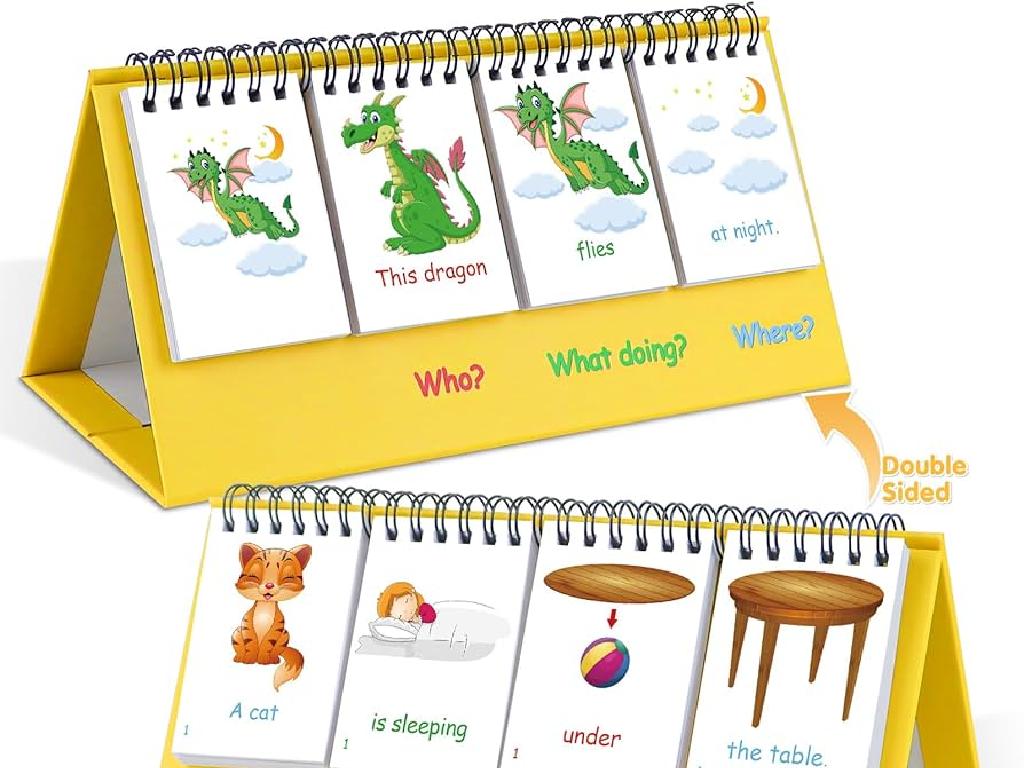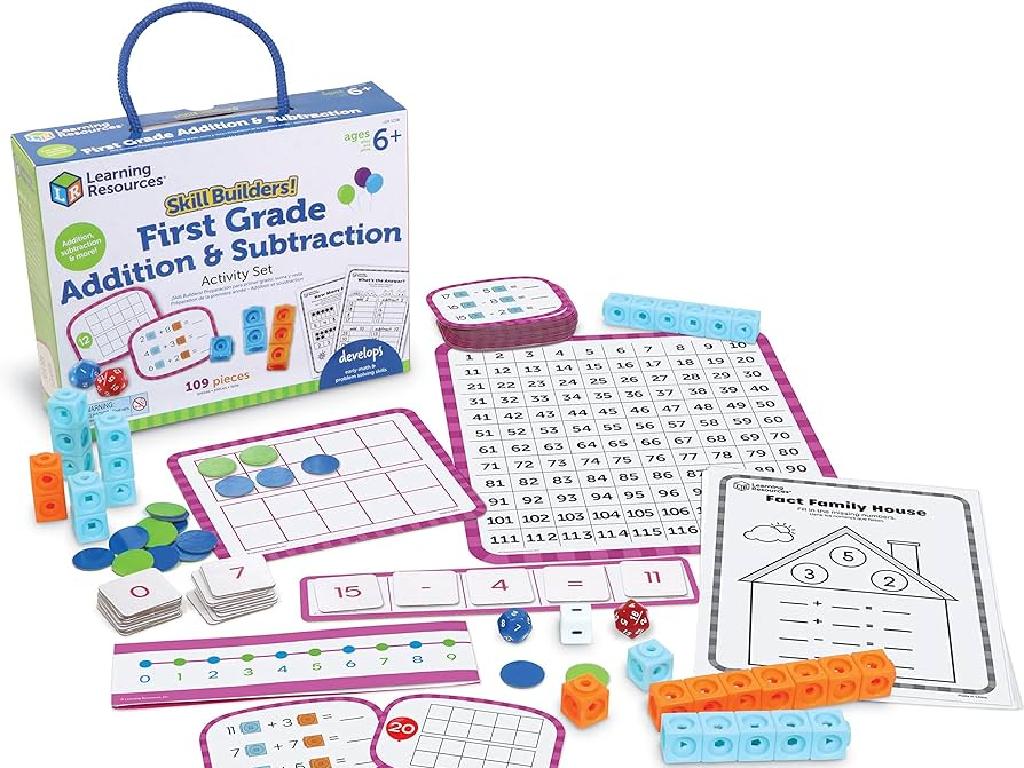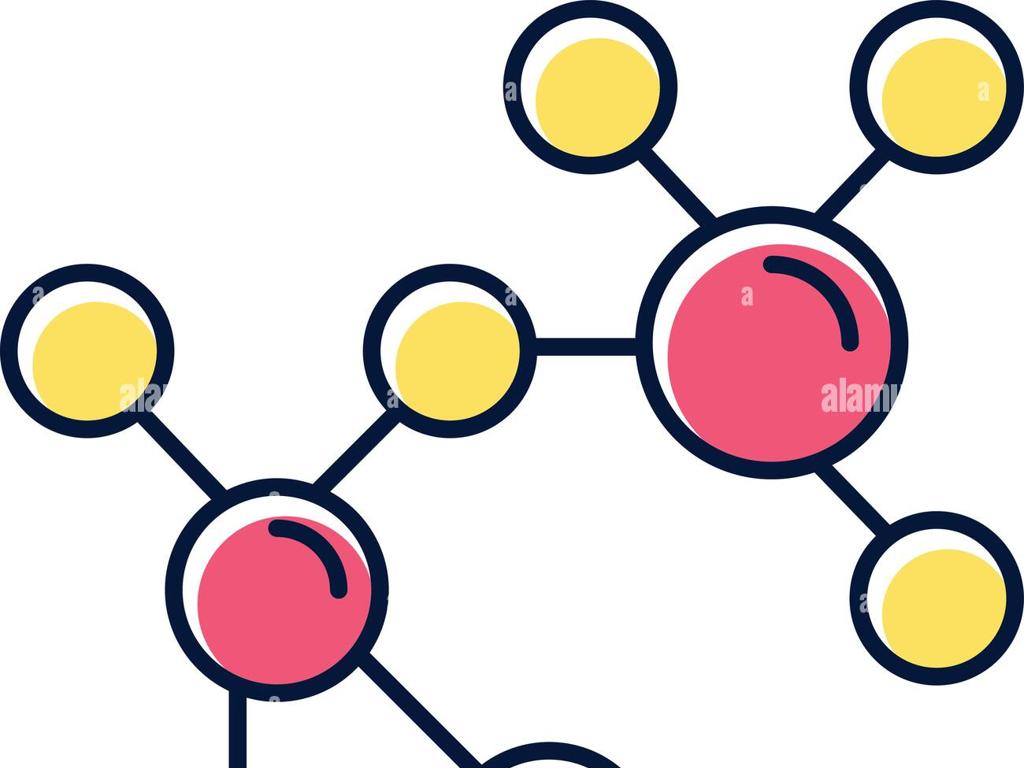Complete A Table For A Two-Variable Relationship
Subject: Math
Grade: Sixth grade
Topic: Two-Variable Equations
Please LOG IN to download the presentation. Access is available to registered users only.
View More Content
Exploring Two-Variable Relationships
– Relationship between variables
– Variables can depend on each other, like time and distance
– Introduction to two-variable equations
– Equations with two variables, e.g., y = 2x + 3
– Real-life applications
– Used in budgeting, science experiments, etc.
– Completing a table exercise
– Fill in missing values using the equation
|
This slide introduces students to the concept of two-variable equations, emphasizing the interconnectedness of variables and their applications in everyday life. Start by explaining how variables can be related, such as the relationship between time spent running and the distance covered. Introduce the basic form of a two-variable equation and illustrate with simple examples. Discuss how these equations are used in various real-life scenarios, like planning finances or predicting outcomes in scientific studies. Conclude with an activity where students complete a table of values for a given two-variable equation, reinforcing their understanding of how changes in one variable affect the other.
Understanding Variables in Equations
– Define a variable in math
– A symbol that represents a number we don’t know yet
– Variables in simple equations
– For example, in x + 2 = 6, x is a variable
– Variables in daily life
– Variables can represent data like temperature, prices, or ages
– Practice with variables
|
This slide introduces the concept of variables, which are fundamental in understanding algebra and equations. A variable is a symbol, often a letter, that stands in for a value we don’t know or that can change. Use simple equations to show how variables function within math problems. Then, connect this concept to real-world situations where variables are present, such as tracking temperature changes or fluctuating prices. Encourage students to think of variables as placeholders for information that can vary. To reinforce learning, provide practice problems where students identify and work with variables in different contexts.
Understanding Two-Variable Relationships
– Explore how variables relate
– Variables can depend on each other, like distance and time in travel.
– See examples of relationships
– Temperature vs. ice cream sales, hours studied vs. test scores.
– Graphs of two-variable relations
– Visualize how one variable affects another on a coordinate plane.
– Interpreting relationship graphs
– Learn to read graphs to understand the pattern between variables.
|
This slide introduces students to the concept of two-variable relationships, which is a foundational element in understanding algebra and functions. Start by explaining that variables are symbols that represent numbers, and they can be related to each other in different ways. Use relatable examples like the relationship between hours of study and grades, or temperature and ice cream sales, to illustrate how one variable can affect another. Show graphs as visual aids to help students see these relationships clearly. Teach them how to interpret graphs, emphasizing the patterns that emerge when variables change. This will prepare them for creating their own graphs and understanding the concept of slope and y-intercept in future lessons.
Creating a Table for Two Variables
– Purpose of tables in relationships
– Tables help visualize how one variable affects another
– Steps to create a two-variable table
– Identify variables, decide the range, fill in values systematically
– Example: x and y variable table
– If x is the number of hours, y might be the total pay at $10/hour
– Practice creating your own table
|
This slide introduces the concept of using tables to understand the relationship between two variables, which is a fundamental aspect of algebra. Start by explaining why tables are useful: they organize information and show patterns between variables. Then, outline the steps to create a table: choose the variables (e.g., x and y), decide the range of values for the first variable, and then calculate the corresponding values for the second variable. Provide an example with variables x and y, such as hours worked and total pay, to illustrate how the table works. Finally, encourage students to practice by creating their own tables with different variables to solidify their understanding.
Completing a Two-Variable Table
– Use equations for missing values
– Apply the equation to find unknowns in the table
– Class practice example
– Let’s solve a table together and fill in the blanks
– Tips to check your work
– Review your solutions by plugging them back into the equation
|
This slide is aimed at teaching students how to use equations to find missing values in a table that represents a two-variable relationship. Start by explaining the concept of variables and how they relate to each other in an equation. Then, move on to a guided practice example with the entire class, where you’ll fill in a table step by step. Emphasize the importance of double-checking work by substituting the found values back into the original equation to see if they satisfy it. This reinforces the concept of a solution and helps students to confirm their answers independently. Prepare to provide additional practice examples for students who may need extra help and encourage peer discussion for collaborative learning.
Class Activity: Complete the Table!
– Pair up with a classmate
– Fill in the missing values
– Use the relationship between variables
– Discuss your strategy
– How did you determine the missing numbers?
– Present your table to the class
|
This activity is designed to encourage collaborative learning and application of two-variable relationships. Students should work in pairs to complete a table where some values are missing, using their understanding of how the two variables in the equation relate to each other. Encourage them to discuss their approach to finding the missing values and the patterns they observe. After completing the table, each pair will share their findings with the class, explaining their strategy and thought process. This will help reinforce their understanding and allow them to learn from each other’s methods. Possible activities could include filling in tables with linear relationships, quadratic relationships, or even simple proportional relationships to cater to different levels of understanding within the class.
Review: Two-Variable Relationships
– Recap of today’s lesson
– Encourage student questions
Ask about parts of the lesson that were unclear or need more explanation.
– Discuss future applications
How understanding relationships helps in solving complex equations later.
– Emphasize skill importance
This foundational skill is crucial for algebra and beyond.
|
This slide aims to consolidate the students’ understanding of two-variable relationships and prepare them for future math concepts. Begin with a brief recap of the key points from today’s lesson, ensuring to highlight how to complete a table for a two-variable relationship. Open the floor for questions, encouraging students to clarify any doubts. Discuss how this skill applies to more advanced math, such as algebra, where they will encounter systems of equations. Emphasize the importance of understanding this concept as a building block for their future math education. Prepare to provide examples of two-variable relationships in real-life scenarios to make the concept more tangible.
Homework: Exploring Two-Variable Relationships
– Complete a two-variable table
– Fill in missing values for x and y
– Understand each variable’s role
– How does changing one variable affect the other?
– Be ready to discuss in class
– Extra: Find a real-world example
– Example: Temperature and ice cream sales
|
This homework assignment is designed to reinforce the concept of two-variable relationships. Students are tasked with completing a table where they will need to determine the missing values for two related variables. Encourage them to think critically about how the variables interact with each other. In the next class, students will discuss their findings, which will help solidify their understanding of the relationship between variables. The extra challenge aims to connect classroom learning with the real world by finding examples such as the relationship between temperature and ice cream sales, which can illustrate how one variable can influence another in a practical context.






